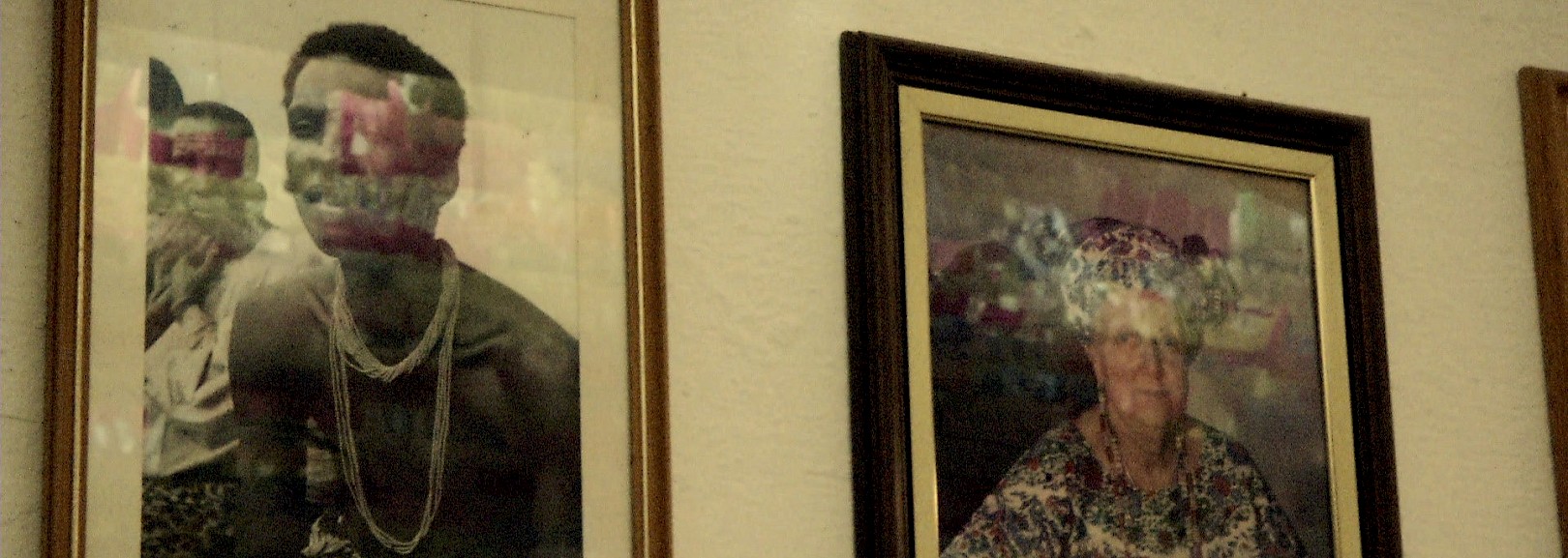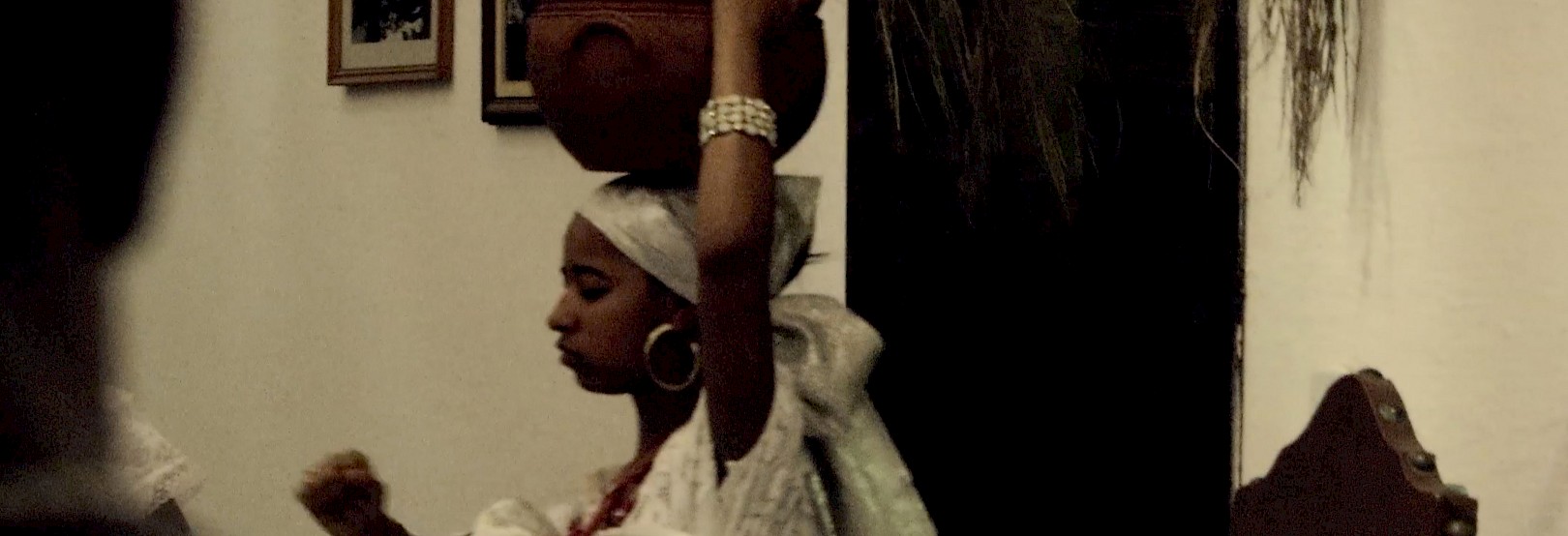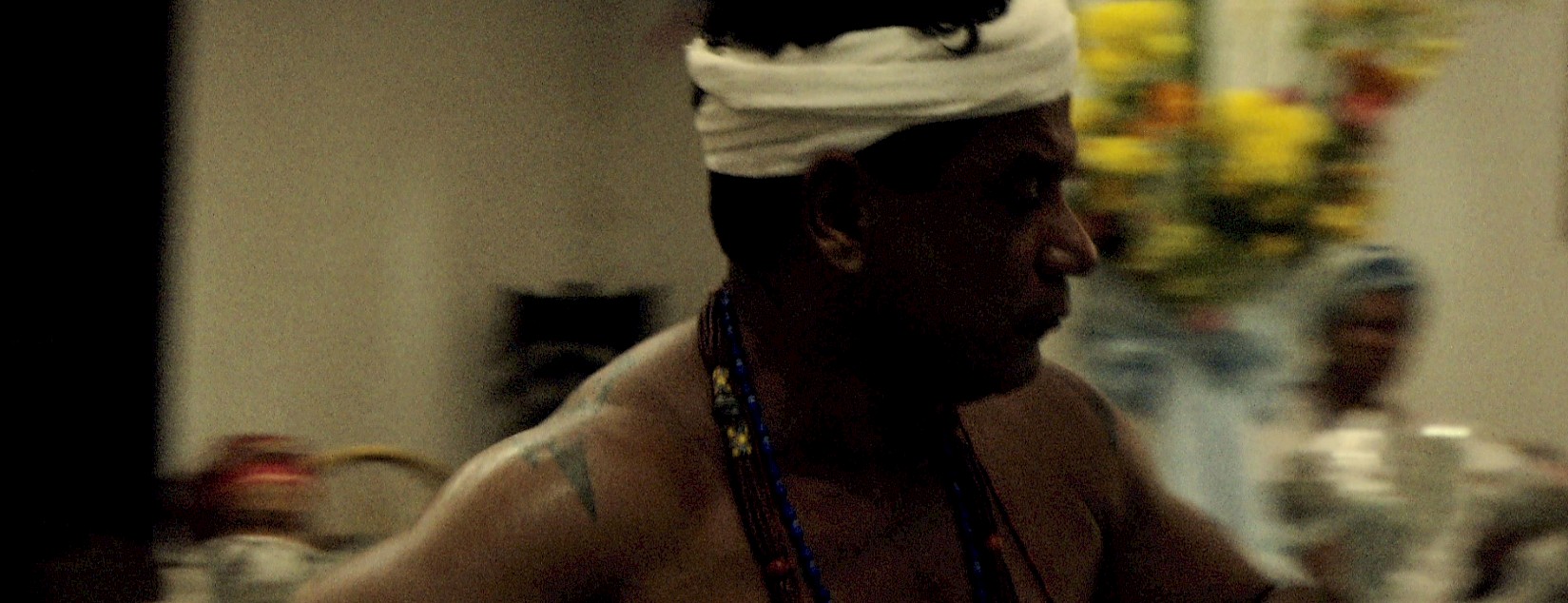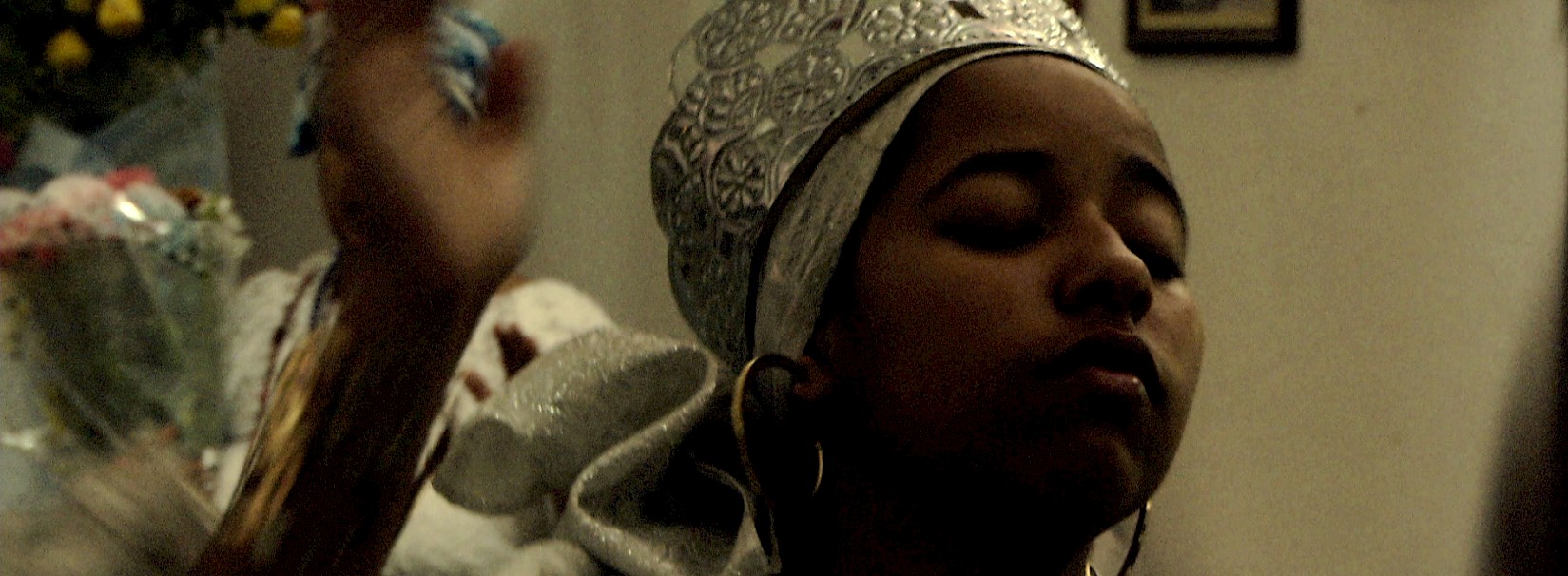Terreiro Ilê Axè Atará Magba
40:34
Ayabás Festivities. Candomblé. Afro Brazil. Mother Gisèle Omindarewá. Santa Cruz da Serra. Baixada Fluminense. Rio de Janeiro. November
Album
Ayabás Festivities
From the color of her eyes to the many seas she crosses to find herself… In every step Gisele Crossard takes there’s a sign that the sweet woman is daughter of the orixá associated with the oceans. The whiteness of her skin, the blue with which she covers those nearby: a dignified and warm gaze. Her quest to nurture everyone who surrounds her is our blessing.
“I didn’t choose this. Iemanjá chose me”
Mother Gisele Omindarewá

The Frenchwoman, as many refer to Gisele around Rio de Janeiro, was born in Morocco while her parents lived there. She spent her childhood and teenage years in World War II France: she witnessed the arrest of her father in Germany and the transformation of her own home into a shelter for many of the persecuted, one of them being her future husband Jean. With him she shared the Binon family name, two children and important crossings between Africa and Brazil. When Gisele was 27 years old, Jean Binon was appointed for Director of Education of Cameroon, then a French colony; 10 years later, he took up a position as Cultural Advisor at the French Embassy in Rio de Janeiro. Fueled by the relocations of her husband, Gisele’s journeys back and forth seemed to traverse her internally and weave into this woman of many lands a new way to look at life.

Included in the diplomatic agenda in Brazil were a variety of cultural encounters that, for her, held clue as to where find pulsing authenticity. In the great halls of her Rio de Janeiro home, she used to throw Brazilian dinner parties with local food and artists. Through her new friends, such as Abdias Nascimento, Gisele started to wander into hills, woods, and circles she would never want to leave.
“There are two Brazils: that of the high society, and that of the people”
Mother Gisele Omindarewá

In close relationship with the arts and the people, Candomblé revealed itself as a religion where she felt most comfortable and, far from the vigilant eyes of high society and her family, she started attending terreiros to watch the rituals. She was a discreet admirer until the Iansã Festivities of 1960: her sight darkened, her legs gave way, and she woke up with feelings of certainty and fear toward the mystery she could no longer control.
“When you’re caught by an orixá,
you’re both conscious and unconscious;
your vision is always different from normal”
Mother Gisele Omindarewá
She, a daughter of Iemanjá , embraced the unseen and was initiated by “getting her saint done” on that same year, an induction into the faith of Brazilian black people under the guidance of Father Joãozinho da Goméia. He is the one who proved she belonged with the Axé and baptized her, a white woman with European background, as Omindarewá, which means Beautiful Water.

Months after her initiation, Omindarewá had to return to France: Jean’s stint in Brazil had come to an end. She continued on her path towards the Axé from another continent: she separated from her husband, started researching orixás at Sorbonne University, and published an Anthropology thesis supervised by sociologist Roger Bastide and supported by photographer and friend Pierre Verger.
“How many white foreign women get to see the Candomblé from within?”
Mother Gisele Omindarewá

During the 70’s, she managed to return to Rio de Janeiro as the educational advisor for the French Cultural Service. Around that time, Verger introduced her to her second master, Father Balbino Daniel de Paula, from Ketu: he is the one who taught her many different rituals and encouraged her to set up her home in Baixada Fluminense, named Terreiro Ilé Asé Atará Magbá, inaugurated in 1973.
The settlement is located 40km away from downtown Rio de Janeiro, has plenty of natural resources and is currently home to a simple population living with drug trafficking and evangelical faith on a daily basis. Inside the white walls that surround the terreiro, each detail reveals Omindarewá’s elegance and research. In the grounds of her property plants and animals for the Candomblé rituals thrive in the hands of Mother Gisele and her ancestral knowledge of leaves: over her many trips to Africa, she researched and exchanged seeds and recipes with many other priestesses and priests, known as saints’ mothers and fathers (mães de santo and pais de santo). With a room for each orixá to receive their offerings, Mother Gisele built a community of over 300 sons of saints (filhos de santo) throughout her 43 years of Axé. Many are the visits to have her consult the Ifá: the knowledge from casting cowrie shells follows her with valuable and often unfathomable ayes and nayes.

“In Brazil, everything has a spiritual reason.”
Mother Gisele Omindarewá
The periodic rituals are like the African fabrics the French Mother would wear each day: details, layers of reverence and respect. Every November, the house reaches maximum capacity for the Ayabás Festivities, one of Candomblé’s most important celebrations. It’s an offering to feminine orixás such as Oxum and Iansã and Iemanjá and Nanã, who receive gifts as reminders of who they are: fruit platters symbolize fertility, they beat the atabaque drums for the Saints and one by one in come the woman warriors in a harmony that can only be made sense of through the senses.
Oxum arrives with embellishments and vanity, Iemanjá dances and brings food for her people, Iansã is the wind that spins the wheels. Beautiful Water, Mother Gisele, overflows: white skin with the touch of black. Iemanjá is the mother of all orixás and all her children, the tranquility of a body that amended maps and mended hearts. She is the blue in the eyes of the Frenchwoman who has spent over nine decades embodying mystery; she is the pale and wrinkled hand filled with spells reaped from the trees that cover so many grounds.
“This is the great idea:
to refrain from thinking, to refrain from wanting to know why this, why that; to let things flow”
Mother Gisele Omindarewá

She overflows. She is Gisele, she is Cossard, she was Bonin. She is Omindarewá, a mother’s head that led the mother of all saints in a dance for the last time in that circle. But she is water, a beautiful unstoppable flow turning into a well of faith, mixing tones in a watercolor for transformation; eyes that turn into a spring, a shore, a relief, a spell of thirst. Overflowing Beautiful Water.
interview
Babalorixá Zero Telles
06:23
Outtakes
Jogo de Ifá
05:00
